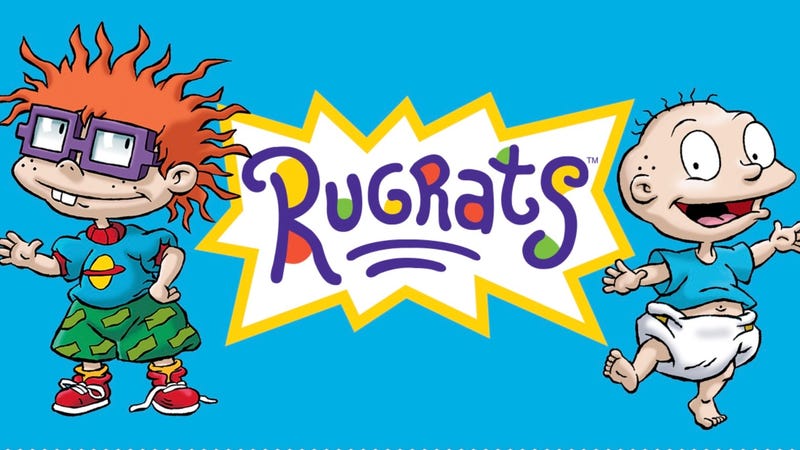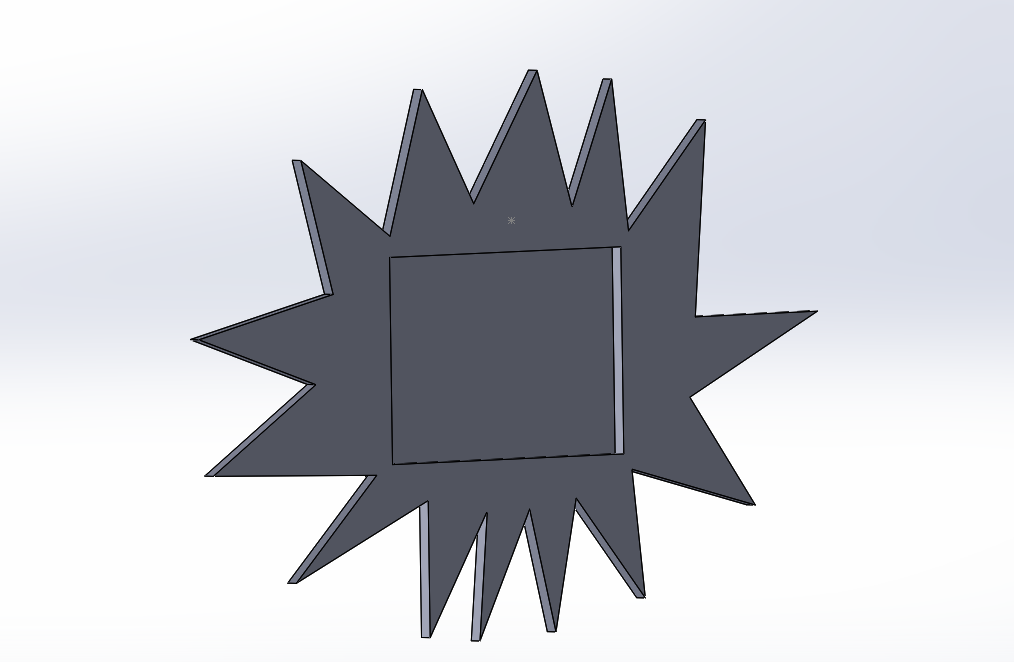Inspiration
My inspirations for this piece was to capture the 1990’s aesthetic of sharp-shaped corners and funky coloring and apply it to a futuristic concept; the smart mirror. My aesthetic will fall along the lines of “what would a smart mirror look like if it was created in 1994”. Being born in 1996, I grew up in a time where these design elements were very common and remind me of my childhood. My other inspiration for this piece was that I currently do not have a whole lot of art in my room, nor do I have a mirror. I would like to design something that I can use regularly that reminds me of my childhood with the aesthetic that I am trying to portray. The smart mirror features will be amazon Alexa integration and possibly a camera that can identify and acknowledge me. These features help add to the futuristic aesthetic, and will make the piece more interesting and more useful once installed in my home


Design
The piece will be shaped very similarly to the Rugrats title block, with protruding triangles forming an ovular shape around the mirror. I wanted the triangles to be random and have no order, but not look daft or foolish. The start and end points of each triangle fall on an ellipse, but the length of the sides of the triangles very wildly as do their placement. I think this adds to the aesthetic I am going for. The body of the mirror will be laser cut out of this pieces of wood for ease of manufacturing and post processing. I am going to try and copy the aesthetic on the Zoom sign as best I can using paint once I laser cut the piece. I plan to do this using tape to create a striped design using multiple neon paints. I will need to do some testing with scrap pieces of wood to determine the best way to accomplish this The two pictures below show what my design will look like and how I plan on applying my aesthetic once I have crafted the wood pieces.



There will also be a back piece made out of wood, which will have to be laser cut. The raspberry pi will sit on top of this back piece, allowing it to be out of sight without interfering with the piece when it sits on a wall. The Raspberry Pi will have Alexa installed on it, a small microphone and a small speaker to allow me to talk to my mirror and ask it questions. A small LED will be installed on the front of the mirror to tell me when the microphone is turned on so I know if the Alexa is listening to me. I will buy the mirror at Home Depot and have them cut it to the size that I need. I will epoxy the mirror into the back plate, and epoxy the back plate onto the backside of the frame. Using epoxy will create a sleek looking design that I cannot achieve with bolts or screws, and will help make my piece look more professional.
Design Constraints
- Usability: The ultimate goal of this project is to create a product that I can use everyday and that functions as I design it to. While it it good to know that if I fail I will still have a functioning mirror, I would really like this to function properly. I want the mirror to deliver me information reliably while showcasing an aesthetic. The dynamic feature of my piece will be the smart features that I design into the piece
- Fluidity of operation: I would like the mirror to be easy to use and operate exactly like I design it. I would like to integrate a smart assistant (like Amazon Alexa or Google Voice) into my micro computer so I can interact with my mirror as seamlessly as possible.
- Aesthetic: The entire aesthetic that I am going for is centered around the 1990’s style of lettering and design, which used wacky shaped and vibrant colors to create cool designs that stood out. I dont want this mirror to look tacky, I want it to look retro and old school, like it was made in 1993.
Cost: I would like to keep this project as cheap as possible, and plan on sourcing as many of my materials as possible from places like GoodWill where I can get my items as cheap as possible. I already have the micro-computer that I plan on using, so I only need sheets of wood that I can cut on the laser cutter, a speaker and microphone for the Alexa integration, and a mirror. I have not developed a budget for myself yet, but I would love to keep this all under $50 - Material and finishing: The material I use must be easy to work with since I do not have the craftsman skills to handcraft this mirror, but it also must look nice to avoid creating a tacky final product. Using laser cut pieces of wood will allow me to easily get the precision I am going for with a material that I can easily paint and finish.
Presentation video can be found at: https://youtu.be/v-9iuVMIwB4
Citations:
https://www.innermind.com/myguides/guides/zoom_new.htm
https://io9.gizmodo.com/rugrats-will-return-with-a-new-tv-show-and-cgi-movie-1827641460

9 Comments. Leave new
it is a fascinating idea Andrew. a smart mirror is not something common and will required some work especially coding wise. if you are going to use a raspberry pi then python will be your best option to run scripts.
You mentioned that you want to make sure it doesn’t look tacky. You could try cutting some metallic paper into your design or sketching your design and paint it in a paint-by-number style.
Hi Andrew,
I really like the project idea you have here! Your project has a very nice balance between engineering and art and I like how you are able to incorporate both without over complicating the overall process. I’m excited to see the final product!
Hey Andrew, I really like that you are going to be using Alexa for your project. It sounds like it is going to come out with a pretty high degree of quality, at least in terms of function. You really found a creative way to simply and quickly produce a rather advanced product!
Very cool idea. I love the 90’s aesthetic that you chose and good prototype. I like the idea of facial or motion recognition dynamic aspects that you could incorporate.
Really cool that you are going to incorporate Amazon Alexa. It’s impressive that you will be doing all the coding yourself. I’d be interested to see how you set up the connection between the mirror and internet server.
This is a really cool idea. I am doing something similar, but with an iPad so it will be scaled down. I really like your aesthetic of a 90s theme. I would love to talk with you your ideas for the final product of the smart mirror since I am doing a project very similar.
Andrew,
Combining Amazon Alexa with your mirror design is a really smart idea! Great job on the presentation as well. Did you follow a certain pattern for your design or it was randomly sketched?
It is cool that you made up a 3d model. How closely do you think you will follow the shape you sketched up? With this aesthetic there will be a fine line between tacky and not, but will look very cool of successfully pulled off.